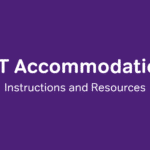I can show you the world…shining, shimmering, splendid!
You blink and suddenly realize you’ve spent the last 52 seconds reenacting the flying carpet scene from Aladdin in your head, featuring yourself and that cute classmate from World History.
Or maybe you’ve caught yourself reciting the alphabet backwards, trying to remember what you had for dinner last Tuesday, or even contemplating your neighbor’s shoelaces with great intensity.
It’s exam day. You’ve been sitting in the same chair, at the same desk, staring at the same packet of pages for so long that the bubbles starting to float right off the scantron page. You’re experiencing…exam boredom. For such crazy symptoms, the diagnosis is pretty simple, right? But a simple diagnosis means a simple cure. With determination and a little creativity, you can beat the boredom!
Bright and early on a Saturday morning is a pretty rough time to be anywhere, especially a marathon long exam. Make sure to read this Magoosh post on getting the rest before the SAT so that you’re alert and energetic. Being alert goes a long way in avoiding boredom. With 4 major sections (plus the optional essay!) ranging in time from 25 to 65 minutes, you’ll be at the testing center for a big chunk of your weekend.
1. Breathe In, Breathe Out
The SAT is pretty lengthy, and even the best test takers can get bored on the SAT. Don’t let a wandering mind derail your hours of preparation and study! If you feel yourself losing concentration, close your eyes for a moment. (But don’t fall asleep!) Take a deep breath and count to five, then get back to the exam with renewed focus.
2. Speed Racer
This strategy is for you competitive types! If the pace of the SAT bores you, make it fun by racing against yourself. The test is timed, of course, but that competitive edge can keep you alert and moving if you feel boredom starting to creep in.
On the Writing and Language section, for example, the long section includes several passages! See if you can beat your previous time for each passage. You’ll be so focused on answering questions and racing against your own clock that boredom won’t stand a chance.
Be careful to avoid stressing yourself out. Don’t work too fast and potentially get answers wrong by not taking the time you need. But if you get amped up by beating your own scores, this just might be the tool you need for SAT day.
3. An object in motion…
…tends to stay in motion. Good ole Isaac Newton probably didn’t know he was giving out good SAT tips! One of the best ways you can avoid zoning out is to simply keep moving.
The flip side to that law of motion is that an object at rest tends to stay at rest. The longer you stare out the window, the harder it is to get back to the questions in front of you. Keep moving doesn’t only apply to your brain. It’s a physical challenge as well! If you can keep your pencil connected to the page with physical movement, it’s more likely that your brain will stay on the page too.
Ways to keep your pencil on the page:
- Circling details in a word problem
- Underline sentences in a reading passage
- Cross out decoy or extra information you don’t need
- Circle important names or dates in a reading passage
- Write out all the numbers in pi… wait. Don’t do that one.
A word of caution to my dear doodlers: Doodling can be a great way to keep your pencil moving on the page, but it can also be dangerous! You can get lost in a doodle just as easily as you can get lost staring out the exam room window. But if lightly doodling helps keep away the boredom without losing focus, go for it.
4. Practice, Practice, Practice
Like so many things in life, practice is a great strategy. The more you practice sitting through the long exam, your attention span will adjust and boredom will be less likely to sneak in. Because the SAT is so long, some test takers might never complete a practice exam the length of the actual test. Many test takers practice in small chunks, working through different sections at a time. While that’s great for getting used to the material on the test, it’s a good idea to practice a complete timed test at least once or twice before exam day. Once you’re prepared for the several hours you’ll be in the testing room, you’ll be familiar dealing with boredom.






Leave a Reply